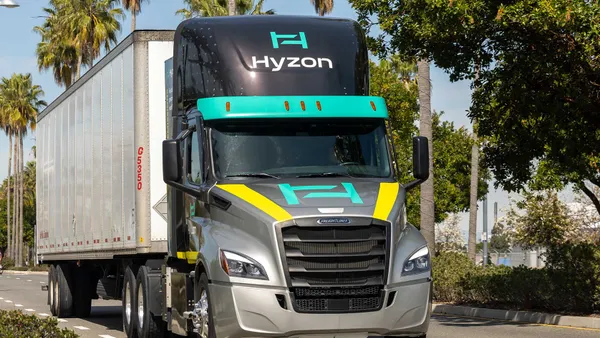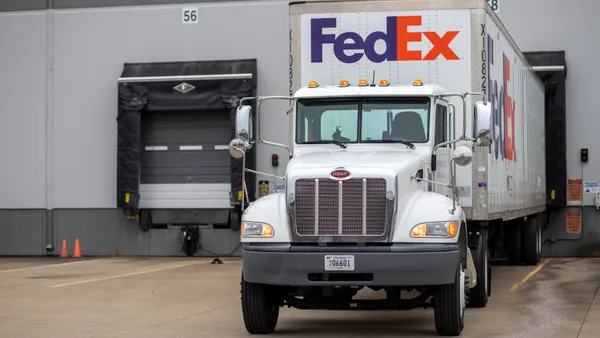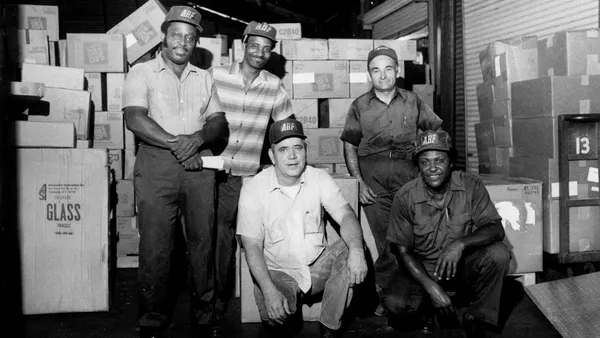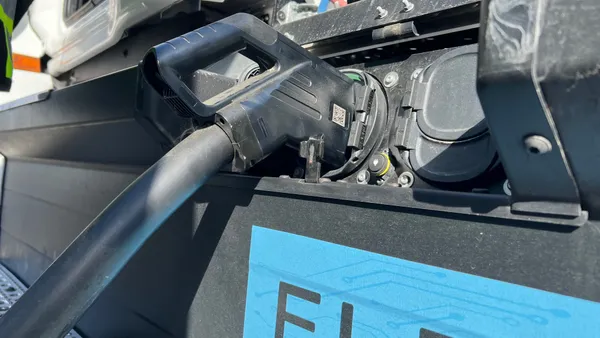This article is part of a series about how six big fleets are planning for a hot freight market in 2022. Click here to view the entire package.
To J.B. Hunt Chief Commercial Officer Shelley Simpson's recollection, the first time the company ever guided customers on cost was August 2017.
"I don't know how much they believed us on that," she said during the Stephens Annual Investment Conference last December. "But I think [customers] came to understand that we typically are on the front end of what's happening in the supply chain."
What followed in 2018 was the freight boom.
Fast forward to 2021, and the market was hot again. But this time, J.B. Hunt had no plans to issue a year-end customer letter — a sign the company doesn't anticipate any major shifts as 2022 beings.
If the 2017 guidance is any indication, the trucking firm isn't wrong. But that doesn't mean expenses won't be rising for trucking firms and, therefore, their customers.
"We have shared with our customers that we have inflation; we have cost pressures that we need to share," Simpson said.
What costs are coming?
A key difference between the 2018 freight boom and the soaring demand seen throughout 2021 is capacity. Supply chain snags and driver-recruitment headwinds have kept supply low this time around.
Simpson said J.B. Hunt had "plateaued" on driver numbers but that the company's goals for those numbers, in general, are relatively high, due to customer demand and the number of trucks in the network.
But the number of new trucks J.B. Hunt will be able to onboard has decreased, which the firm has had to discuss with OEMs and customers. Plans are "constantly evolving," she said.
By the end of Q1, J.B. Hunt aims to onboard 12,000 intermodal containers and 3,000 boxes for J.B. Hunt 360, which will help with capacity. But orders for new Class 8 trucks aren't close to meeting demand, according to FTR. Semiconductor shortages are constraining build rates, and manufacturers don't want to over-commit.
"OEMs have a large number of fleet commitments for 2022. They are delaying entering these orders until they know how many they will be able to build each month," FTR Vice President of Commercial Vehicles Don Ake said in a recent post.
Because of the lack of new builds, large fleets have had to run vehicles beyond their trade-in cycles, Ake said. That's true for J.B. Hunt, which has "a considerable amount" of trades coming due in 2022, Simpson said.
"Us not being able to take on some new equipment — that creates an increase in costs," Simpson said.
In early December, J.B. Hunt was still doing the math on how long it could hold onto its equipment. But Simpson said she felt confident in the plan for continued use. Other fleets may not be so fortunate, however.
Simpson predicted the inability to trade could be an industry-wide trend that not every fleet could afford. J.B. Hunt is a fleet that can afford it, in part by sharing costs with customers.
"So, the cost of service is going to move up. That's a new cost that we really had not talked to our customers about," she said.
With older equipment, maintenance costs are likely to go up across the board. And market dynamics would also prop up used-truck prices, which are already elevated, she said.
Passing costs onto customers
High demand is more favorable than low, but when supply can't keep up, customer expectations are some of the first things to become compromised.
In more nondisruptive times, J.B. Hunt usually has a good enough understanding of its cost basis to incorporate it into bid pricing, which allows customers to plan. But current market uncertainty, however, means the bids don't necessarily have the best data behind them, Simpson said.
"[Customers] certainly aren't that good at forecasting because we aren't, either," she said. "You really do need to define your network and what that looks like. Our customers have struggled with that; we have as well. And so, we're constantly finding that balance."
J.B. Hunt generally eschews issuing wholesale rate increases across its customer base, which is why customer letters are so rare, Simpson said.
Instead, the company prefers to talk to each customer individually. That way, it can customize increases to what is necessary, depending on the type of business, location, fluidity and other factors.
"Every case is going to be a little bit different," she said.











